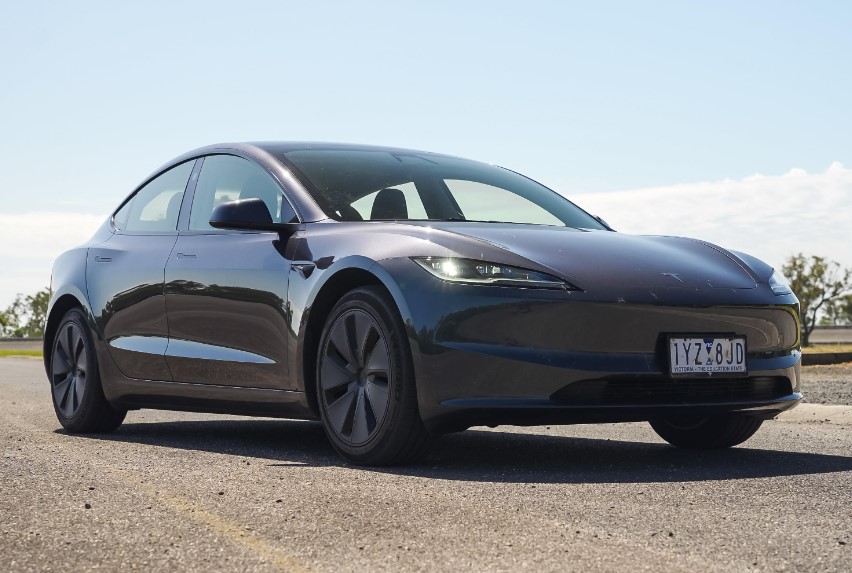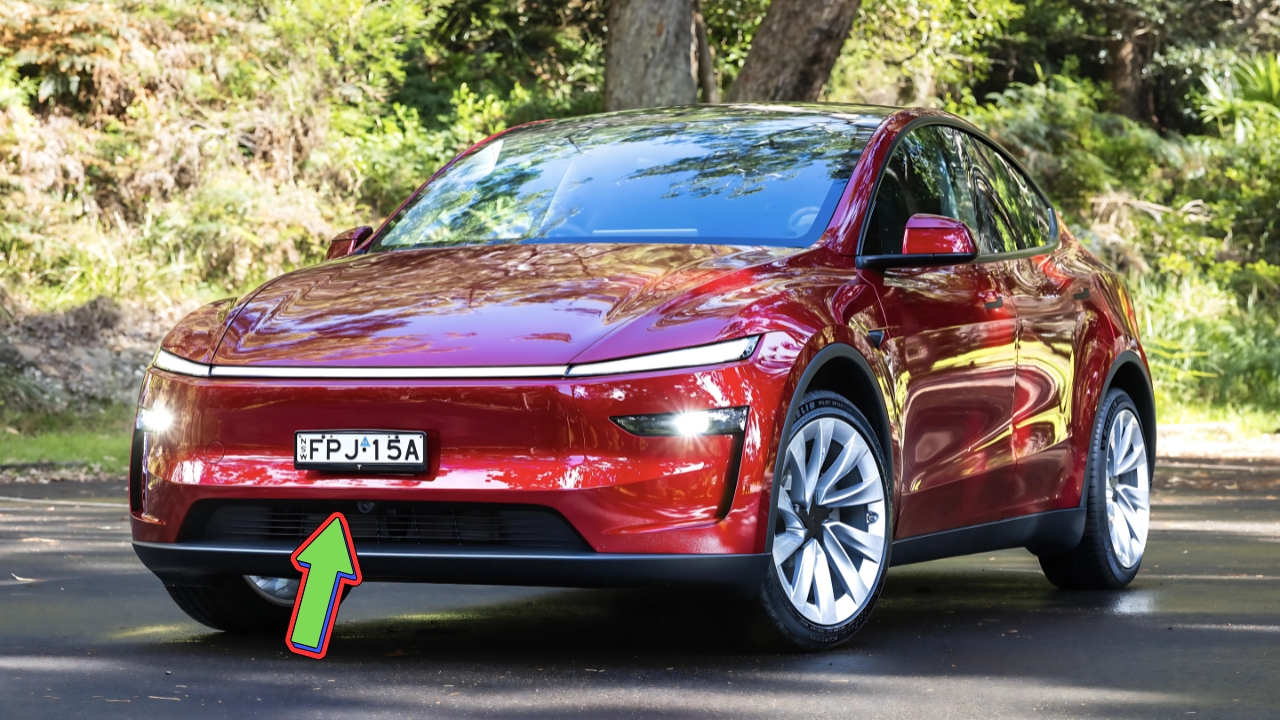Tesla Model Y : The Australian electric vehicle landscape is experiencing unprecedented turbulence, with Tesla’s once-dominant position under serious threat.
However, the recent launch of the refreshed 2025 Model Y represents a critical turning point that could potentially revitalize not just Tesla’s fortunes, but the entire Australian EV market that has been surprisingly stagnant despite global growth trends.
The Dramatic Fall from Grace
Just eighteen months ago, Tesla commanded an overwhelming 50% share of Australia’s electric vehicle market. The company’s Model Y and Model 3 were household names, synonymous with the electric revolution Down Under.
Fast-forward to April 2025, and the situation looks drastically different. Tesla’s market share has plummeted to a mere 8.32%, marking the lowest point in the company’s Australian history.
The numbers tell a sobering story. Tesla’s sales dropped by 60% in the first quarter of 2025 compared to the same period in 2024. In April alone, the company sold just 500 vehicles across both the Model Y and Model 3, with the Model Y ranking eighth among electric vehicles and the Model 3 falling to tenth place.
This represents a staggering fall for vehicles that were previously Australia’s best-selling EVs.
Understanding the Perfect Storm
The collapse in Tesla’s Australian sales didn’t happen overnight. Several interconnected factors created what industry experts describe as a “perfect storm” that devastated the American automaker’s local operations.
Factory Retooling and Supply Constraints
The primary catalyst for Tesla’s decline was the company’s decision to retool its manufacturing facilities for the new Model Y refresh, internally codenamed “Juniper.”
This strategic move, while necessary for long-term competitiveness, created significant supply shortages throughout late 2024 and early 2025. Australian consumers found themselves facing extended wait times for vehicle deliveries, prompting many to explore alternative options.
The Musk Factor
Elon Musk’s increasingly polarizing political statements and associations have created what industry insiders term “the Musk factor.” Consumer sentiment research indicates that Musk’s support for controversial political figures and his interventions in international politics have sparked boycotts and demonstrations across multiple markets.
This phenomenon has been particularly pronounced in Australia, where environmental consciousness often aligns with progressive political values.
Rising Chinese Competition
Perhaps most significantly, the Australian market has witnessed an invasion of competitively priced Chinese electric vehicles. Brands like BYD, MG, and Kia have introduced compelling alternatives that offer similar features at lower price points. The BYD Sealion 7, for instance, starts at AU$54,990, significantly undercutting the Model Y’s AU$63,400 starting price.
Market Dynamics and Consumer Behavior

The transformation of Australia’s EV market reflects broader global trends toward democratization of electric mobility. Where Tesla once enjoyed minimal competition, consumers now have access to over 100 different electric vehicle models, compared to just six options seven years ago.
Price Sensitivity in Challenging Times
Australia’s economic climate in 2025 has been marked by persistent inflation and high interest rates, making consumers increasingly price-conscious. The emergence of capable Chinese alternatives priced AU$8,000 to AU$15,000 below comparable Tesla models has proven irresistible for many buyers. This price differential becomes even more significant when considering Australia’s federal and state incentive programs, which can further reduce the effective purchase price of qualifying vehicles.
The Premium Segment Paradox
Interestingly, Tesla’s struggles haven’t necessarily indicated a rejection of premium electric vehicles. Instead, they reflect a maturing market where premium features are becoming available across multiple price points. The new Kia EV5 and EV3, which achieved sales of 342 and 336 units respectively in April, demonstrate that consumers are willing to embrace new brands that offer compelling value propositions.
The New Model Y: Tesla’s Comeback Strategy
Tesla’s response to its Australian challenges comes in the form of the comprehensively refreshed 2025 Model Y. The company has invested heavily in addressing the criticisms that led to its market share erosion while introducing features designed to reclaim its premium positioning.
Exterior and Performance Enhancements
The new Model Y features a completely redesigned front and rear light signature, creating a more distinctive visual identity that separates it from its predecessors. New paint options, including the striking Ultra Red and sophisticated Quicksilver, provide customers with more personalization choices. More importantly, Tesla has improved the vehicle’s aerodynamics, resulting in enhanced range and efficiency that directly addresses one of the primary concerns of Australian buyers given the country’s vast distances.
Interior Revolution
Perhaps the most significant improvements are found inside the cabin. Tesla has addressed long-standing criticism about interior quality by introducing premium materials throughout the passenger compartment. The addition of ventilated front seats addresses Australia’s often extreme climate conditions, while the new ambient lighting system creates a more luxurious atmosphere.
Rear passengers, previously somewhat neglected in Tesla’s design philosophy, now benefit from their own entertainment screen, individual climate controls, and powered reclining seats. These features directly compete with luxury German alternatives while maintaining Tesla’s technological edge.
Technological Advancement
The refreshed Model Y incorporates Tesla’s latest autopilot hardware and software, promising improved safety and convenience features. The upgraded suspension system, combined with enhanced acoustic glass, addresses previous complaints about road noise and ride quality that had become increasingly important as competitors improved their offerings.
Market Recovery Signals
Early indicators suggest that Tesla’s strategy may be working. The company’s Australian director, Thom Drew, reports that the first shipment of 3,500 new Model Y vehicles arrived in May, with additional shipments scheduled throughout the second quarter. More encouraging is Drew’s report of significant interest from first-time EV buyers, suggesting that the refreshed model is attracting new customers rather than simply retaining existing Tesla enthusiasts.
Pre-Orders and Market Response
While specific Australian pre-order numbers remain confidential, global trends provide encouraging context. In China, Tesla received over 200,000 orders for the new Model Y within the first two months of availability, with 100,000 orders placed in the initial two weeks alone. If Australian demand follows similar patterns, Tesla could see a significant recovery in local sales.
Competitive Positioning
The new Model Y’s pricing strategy acknowledges market realities while maintaining premium positioning. The AU$63,400 starting price represents a AU$7,500 increase over the previous model, but Tesla is betting that the comprehensive improvements justify the premium. Early customer feedback suggests that many buyers view the additional cost as reasonable given the enhanced feature set.
Broader Industry Implications
Tesla’s struggles and potential recovery carry implications far beyond a single company’s fortunes. The Australian EV market’s health has become increasingly dependent on Tesla’s performance, as other manufacturers have struggled to offset the American company’s sales decline.
Market Stagnation Concerns
Industry data reveals that overall EV sales growth in Australia has slowed significantly, primarily due to Tesla’s dramatic decline. While Chinese brands have gained market share, their absolute sales increases haven’t fully compensated for Tesla’s losses. This dynamic has concerned policymakers and industry advocates who worry that Australia’s EV adoption rate may lag behind global trends.
Infrastructure Development
Tesla’s Supercharger network remains a significant competitive advantage in Australia, where charging infrastructure outside major cities remains limited. The company’s continued investment in expanding this network, regardless of sales fluctuations, provides long-term value that competitors struggle to match. Recent announcements regarding Supercharger access for non-Tesla vehicles may actually strengthen Tesla’s ecosystem approach.
Future Market Projections
Industry analysts remain optimistic about both Tesla’s recovery prospects and the broader Australian EV market’s potential. Projections suggest that electric vehicles will capture 11% of all new car sales in Australia in 2025, rising from 9% in 2024. This growth trajectory, if sustained, would represent approximately 130,000 electric vehicles sold annually.
Government Policy Impact
Australia’s New Vehicle Efficiency Standards (NVES), implemented in 2025, create regulatory pressure that should benefit all electric vehicle manufacturers, including Tesla. These standards require manufacturers to reduce average fleet emissions, making electric vehicles increasingly attractive for compliance purposes.
Technological Convergence
The rapid improvement in battery technology, charging infrastructure, and vehicle capabilities suggests that the current market disruption may be temporary. As the technology matures and price differences narrow, brand loyalty and customer experience may become more important than initial purchase price, potentially favoring established players like Tesla.
Frequently Asked Questions
Will Tesla’s Model Y regain its position as Australia’s best-selling EV?
While Tesla faces unprecedented competition, the comprehensive upgrades in the 2025 Model Y, combined with the company’s established Supercharger network and brand recognition, position it well for recovery. However, regaining dominant market share seems unlikely given the increased competition and market maturation.
How do Chinese EV brands compare to Tesla in terms of quality and features?
Chinese manufacturers like BYD and MG have significantly improved their offerings, now providing comparable features to Tesla at lower prices. However, Tesla maintains advantages in software updates, charging infrastructure, and resale value that justify its premium positioning for many buyers.
What impact will Tesla’s recovery have on Australia’s overall EV adoption?
Tesla’s performance significantly influences Australia’s EV market due to the company’s historical dominance. A successful Model Y recovery could accelerate overall market growth by restoring consumer confidence and driving competitive responses from other manufacturers, ultimately benefiting all Australian EV buyers through improved choices and competitive pricing.

